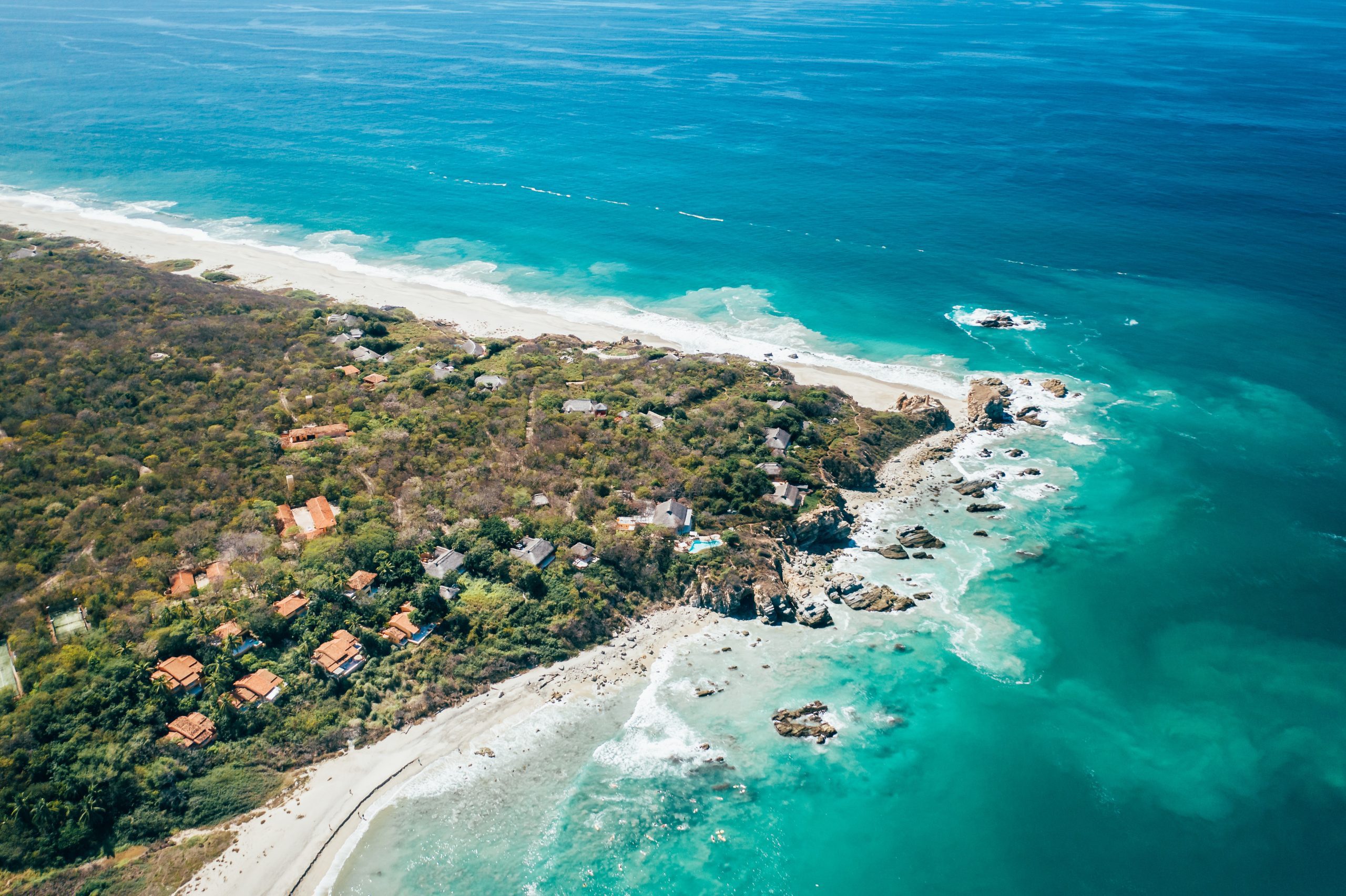Wellness Tourism in Mexico: Trends for the Summer of 2024
Mexico City, September 8, 2023 – Wellness tourism, the art of traveling with the primary goal of enhancing physical, mental, and emotional well-being, is soaring in popularity. According to the Global Wellness Institute, the wellness tourism industry is projected to reach a staggering $1.3 trillion by 2025. Travelers are increasingly seeking destinations that provide holistic and transformative experiences, and Mexico stands out as one of the prime havens for this trend. With its rich culture, diverse natural landscapes, and ancient healing traditions, Mexico offers an array of options for those looking to unwind, rejuvenate, and rediscover themselves.
Thank you for reading this post, don't forget to subscribe!
In this article, we will delve into the wellness tourism trends set to shape Mexico in the summer of 2024. We will also highlight some of the finest resorts and destinations catering to this burgeoning market.
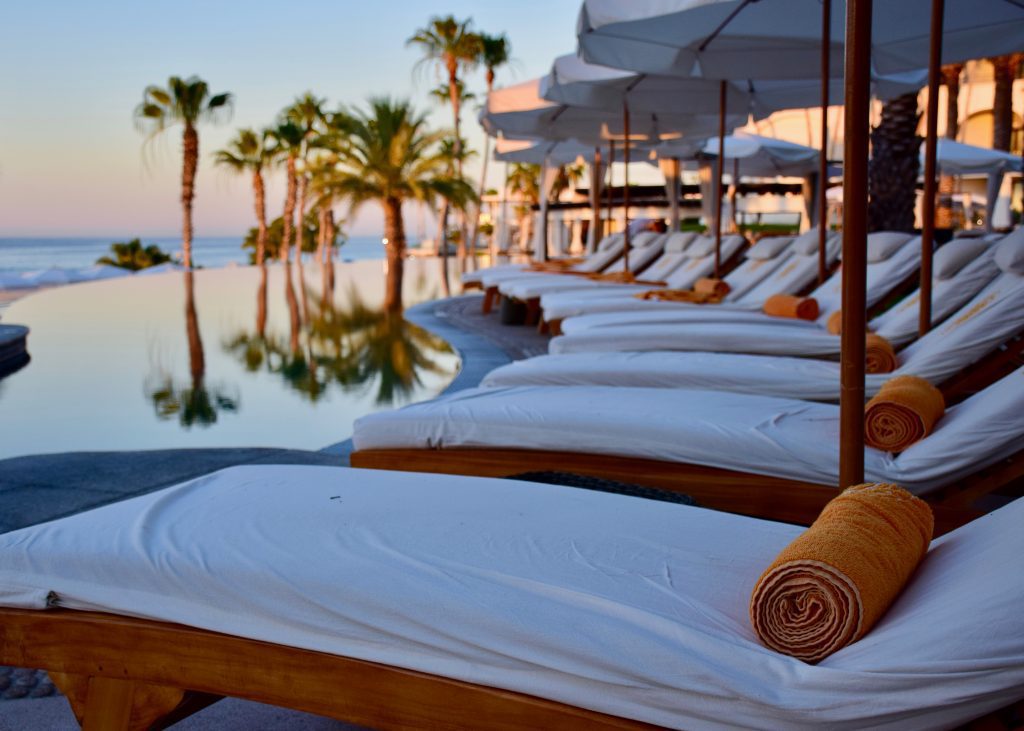
Trend #1: Policymakers Recognize the Value of Wellness
One of the paramount trends that will mold wellness tourism in Mexico in 2024 is the growing acknowledgment of wellness by policymakers and authorities. An increasing number of destinations are vying to establish themselves as wellness hubs, aiming to attract travelers who prioritize health and well-being.
Quintana Roo, a state encompassing renowned destinations such as Cancun, Playa del Carmen, and Tulum, is at the forefront of this movement. It has initiated a Wellness Tourism Association committed to promoting its wellness offerings and setting benchmarks and certifications for wellness providers. The association’s vision is to position Quintana Roo as a premier wellness tourism destination not only in Latin America but worldwide.
Another notable example is San Miguel de Allende, a city designated as a World Heritage Site by UNESCO and a Creative City by UNWTO. This picturesque city is celebrated for its vibrant artistic and cultural scene, as well as its wellness offerings like thermal springs, organic farms, and holistic centers. San Miguel de Allende has hosted numerous wellness events and festivals, including the International Wellness Festival and the Mindful Travel Summit, further solidifying its status as a wellness hotspot.
Trend #2: Wellness Resorts Offer Personalized and Immersive Experiences
The second significant trend influencing wellness tourism in Mexico for the summer of 2024 is the burgeoning demand for personalized and immersive experiences that transcend conventional spa treatments and yoga classes. Discerning travelers are seeking resorts that provide tailor-made programs, addressing their specific needs and aspirations. Additionally, they yearn for immersive experiences that connect them with the local culture and surrounding nature.
One&Only Mandarina, a luxurious resort situated on Mexico’s Pacific coast in Monteon, exemplifies this trend impeccably. The resort offers an array of personalized wellness programs encompassing expert consultations, bespoke treatments, fitness sessions, nutrition plans, and mindfulness activities. But it doesn’t stop there. One&Only Mandarina invites guests to engage in immersive experiences like hiking through lush rainforests, kayaking along the pristine coastlines, horseback riding on picturesque beaches, and visiting local communities.
Another gem is Sanara Tulum, an eco-retreat nestled on the Caribbean coast of Mexico. This sanctuary boasts a cutting-edge yoga studio and a wellness center rooted in traditional Mayan healing principles. Sound healing sessions are a weekly offering, complementing a gluten-free, vegan-friendly menu. Moreover, guests have the opportunity to explore nearby archaeological wonders and the breathtaking natural surroundings.
Trend #3: Wellness Travelers Seek Diversity and Adventure
The third trend that will significantly impact wellness tourism in Mexico in 2024 is the fervor for diversity and adventure among wellness travelers. Rather than confining themselves to a single destination or resort, these intrepid souls are on the hunt for opportunities to explore the varied regions and landscapes of Mexico. They also crave adventurous activities that challenge them physically and mentally.
Journey Mexico, a travel company specializing in tailor-made itineraries, is a prime choice for travelers seeking a multifaceted experience of Mexico’s culture, nature, and adventure. Some of their wellness-focused trips include traversing the awe-inspiring Copper Canyon, biking through colonial towns, surfing along the shores of Baja California, diving in the aquatic wonders of Cozumel, and camping in the mystical Yucatan Peninsula.
For those committed to sustainability and social responsibility, Tierra Ventura, another esteemed travel company, offers adventure tours that seamlessly weave wellness into the fabric of their itineraries. Their wellness-oriented tours encompass thrilling activities like rafting in Veracruz, summiting volcanoes in Puebla, kayaking in the untamed beauty of Chiapas, and trekking through the captivating landscapes of Oaxaca.
Conclusion
Wellness tourism in Mexico is not merely a passing fad; it’s an industry in full bloom and set to continue flourishing in 2023. Travelers seeking wellness-focused vacations will discover an abundance of options, ranging from opulent resorts to adventurous expeditions. Mexico, with its unique blend of culture, nature, and healing traditions, stands as the quintessential destination for wellness tourism.
In a world where the pursuit of well-being has become a paramount endeavor, Mexico beckons as a sanctuary where one can rejuvenate their body, mind, and spirit amidst the allure of its diverse landscapes and ancient wisdom.
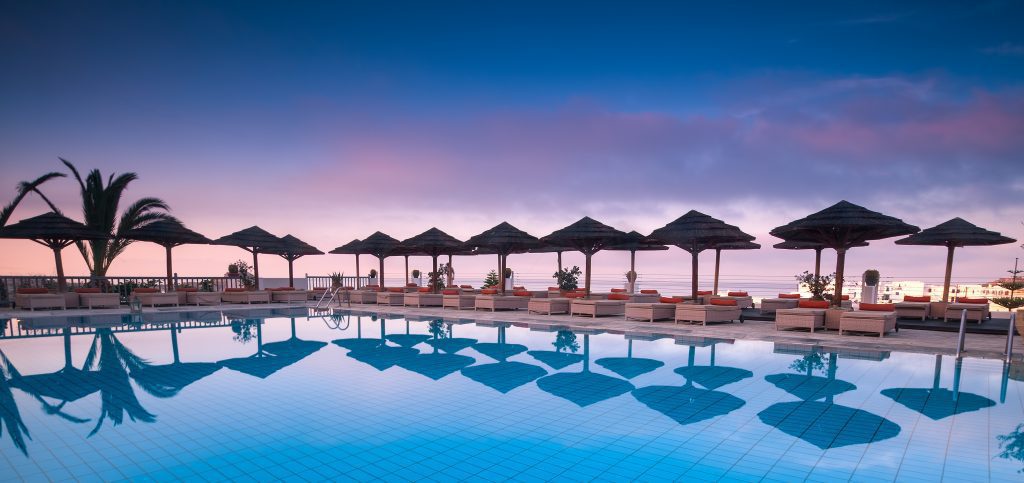
Defining Wellness Tourism
Wellness tourism, in its essence, represents a transformative journey towards holistic well-being. It is a conscious choice to explore global destinations not merely for leisure but with the profound intention of nurturing one’s physical, psychological, or spiritual health. This burgeoning industry is a testament to the growing awareness of the vital connection between travel and wellness.
Wellness tourism is far from a one-size-fits-all concept. It encompasses a diverse range of activities and experiences tailored to individual preferences and needs. Travelers may embark on wellness journeys that include meditation, various forms of yoga, traditional or exercise-based, and a spectrum of treatments that span from conventional to alternative, complementary, herbal, and even homeopathic medicine. Each aspect of wellness tourism is designed to revitalize and harmonize the body and mind.
Key Elements of Wellness Tourism:
- Meditation: A practice for cultivating mindfulness and inner peace.
- Yoga: Both classical and exercise-based yoga, offering physical and mental benefits.
- Holistic Treatments: Embracing a wide array of healing approaches, from conventional medicine to alternative therapies.
- Spiritual Activities: Exploring the spiritual dimension through sacred practices.
The Purpose and Scope of This Article
This article serves as your comprehensive guide to the dynamic realm of wellness tourism. We will delve deep into the market, exploring its present valuation and the key players who shape its landscape. You will gain insights into the array of services that contribute to the wellness tourism industry, such as lodging, transportation, activities, and dining options. Furthermore, we will investigate the dominating force of the lodging segment within this sector.
Wellness Tourism’s Impact on Health and Well-being
The impact of wellness tourism extends far beyond the traveler’s personal journey. We’ll also examine how wellness tourism contributes to global market growth and the issues and challenges that currently affect or will influence the industry in the future. As you explore this article, you’ll gain a comprehensive understanding of wellness tourism, from its market dynamics to the transformative experiences it offers. Get ready to embark on a journey through the world of wellness tourism, where travel meets well-being in the most enriching way.
Chapter 2: The Wellness Tourism Market
The wellness tourism market is a thriving and dynamic sector that has witnessed remarkable growth in recent years. This chapter provides insights into the current market valuation, key industry players, the spectrum of services offered within the wellness tourism market, and the dominance of the lodging segment.
2.1. Current Market Valuation
As of the latest data available, the global wellness tourism industry was valued at an impressive $850.55 billion in 2021. This substantial market value is projected to soar to a staggering $2.1 trillion by 2030. Such exponential growth underscores the increasing significance of wellness tourism in the travel and hospitality sector.
Factors Fueling Market Growth:
- Rising awareness of the importance of well-being.
- Growing demand for stress management and relaxation.
- Increasing interest in holistic health and alternative therapies.
- Integration of wellness offerings by luxury hospitality brands.
2.2. Key Industry Players
The wellness tourism market comprises a diverse range of players, each contributing to the industry’s growth and development. From hospitality giants to wellness practitioners and service providers, a multitude of stakeholders shape the landscape of wellness tourism.
Prominent Industry Players:
- Four Seasons Hotels and Resorts: Renowned for its house-brand spas.
- Aman Resorts: Offering luxurious wellness experiences.
- Oberoi Group: Embracing wellness in hospitality.
- Mandarin Oriental Hotel Group: Focusing on holistic well-being.
- Ritz-Carlton Hotel Company: Integrating wellness into the leisure experience.
2.3. Services within the Wellness Tourism Market
Wellness tourism encompasses a wide array of services that cater to the diverse needs and preferences of travelers seeking well-being. These services can be categorized into several key areas, each contributing to the overall wellness experience.
2.3.1. Lodging
Lodging plays a pivotal role in wellness tourism, offering travelers a serene andrejuvenating environment. Wellness-focused accommodations provide amenities such as dedicated wellness suites, personalized wellness programs, and access to on-site spas and fitness centers.
2.3.2. Transportation
Wellness-oriented transportation services aim to enhance the overall travel experience. This includes options like wellness-focused airlines offering healthy menus and in-flight meditation sessions, as well as eco-friendly transportation choices to reduce the environmental impact of travel.
2.3.3. Activities
Activities within wellness tourism span a wide spectrum, from yoga and meditation classes to outdoor adventures like hiking and nature exploration. Travelers can choose activities that align with their wellness goals, whether it’s relaxation, fitness, or spiritual enrichment.
2.3.4. Food and Drink
Nutrition is a vital component of well-being, and wellness tourism destinations often prioritize healthy and organic dining options. Travelers can indulge in farm-to-table dining experiences, detoxifying menus, and wellness-focused cooking classes.
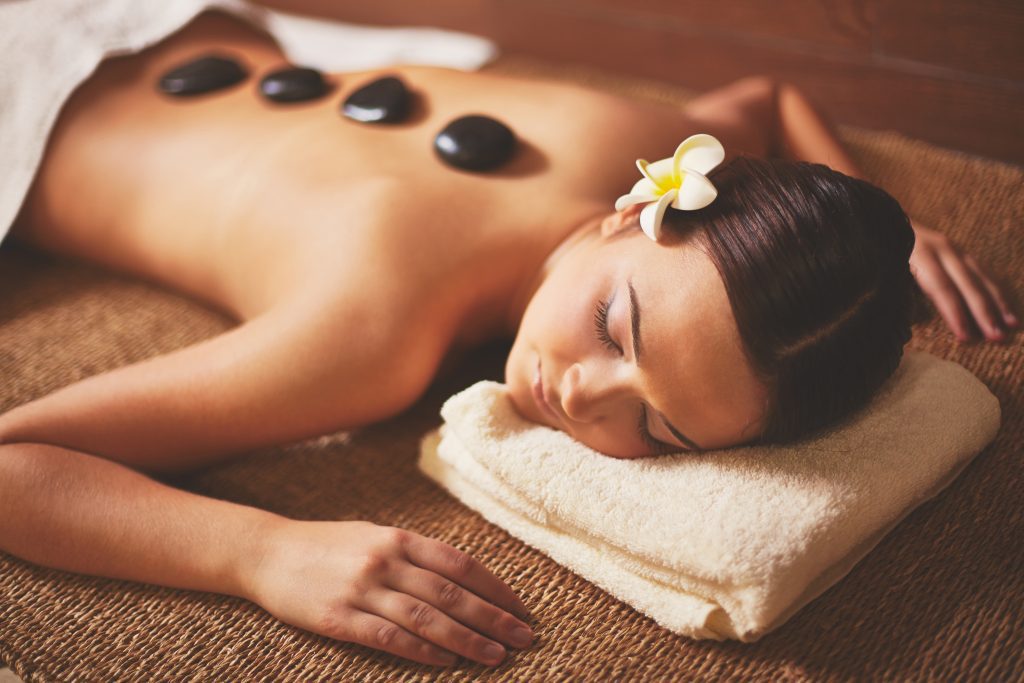
2.4. The Dominance of the Lodging Segment
Within the various services offered in the wellness tourism market, the lodging segment stands out as a dominant force. In 2022, lodging accounted for approximately 23% of the revenue generated within the wellness tourism industry. This highlights the significance of accommodations that prioritize wellness and provide travelers with the perfect setting to unwind and rejuvenate.
As we delve deeper into the world of wellness tourism, it becomes evident that the market is not just about travel; it’s about the pursuit of holistic well-being. The next chapter will take us on a journey through regional insights, exploring the unique characteristics of wellness tourism in different parts of the world.
Chapter 3: Regional Insights
Wellness tourism is a global phenomenon, and different regions around the world offer unique experiences that cater to the diverse wellness needs and preferences of travelers. In this chapter, we’ll explore regional insights, highlighting key characteristics and trends in some of the world’s most prominent wellness tourism destinations.
3.1. North America: The Largest Market
North America stands out as the largest market for wellness tourism, boasting a diverse range of wellness offerings that cater to travelers seeking rejuvenation and holistic well-being. What sets North America apart?
Factors Contributing to North America’s Dominance:
- Spa Culture: North America has a well-established spa culture with a wide variety of wellness resorts and retreats. From luxurious spa treatments to natural hot springs, there’s something for every wellness traveler.
- Diverse Landscapes: The continent’s diverse landscapes offer wellness opportunities, from beachfront yoga retreats in California to mountain wellness escapes in Colorado.
- Holistic Health Practices: North America is home to numerous wellness practitioners, offering services ranging from yoga and meditation to holistic therapies and nutrition counseling.
3.2. Europe: A Growing Wellness Tourism Hub
Europe is witnessing substantial growth in wellness tourism, with travelers increasingly seeking wellness experiences that connect with the continent’s rich history and culture.
European Preferences in Wellness Tourism:
- Traditional Therapies: Europe is known for its traditional wellness practices, such as balneotherapy (healing with mineral-rich water), thalassotherapy (seawater treatments), and hydrotherapy (water-based therapies).
- Wellness in Nature: European destinations often incorporate the healing properties of natural surroundings. Think forest bathing in Scandinavia or wellness hikes in the Alps.
- Cultural Immersion: Wellness tourists in Europe enjoy immersing themselves in the local culture, from savoring Mediterranean diets to participating in traditional ceremonies and rituals.
3.3. Asia-Pacific: Exploring Ancient Traditions
The Asia-Pacific region is a treasure trove of ancient wellness traditions, drawing travelers from across the globe who seek to experience age-old healing practices.
Traditional Wellness Practices in Asia-Pacific:
- Yoga and Ayurveda: India is the birthplace of yoga and Ayurveda, making it a mecca for wellness seekers. Visitors can immerse themselves in yoga retreats or undergo Ayurvedic treatments.
- Meditation Retreats: Countries like Thailand and Myanmar offer serene meditation retreats, where travelers can disconnect from the modern world and find inner peace.
- Traditional Chinese Medicine (TCM): China is known for TCM, including acupuncture and herbal medicine. Wellness tourists explore these ancient practices to restore balance and harmony.
3.4. Latin America-Caribbean: Emerging Trends
The Latin America-Caribbean region is experiencing a surge in wellness tourism, thanks to its natural beauty, warm climate, and emerging wellness offerings.

3.5. Middle East and Africa: Opportunities and Challenges
Wellness tourism in the Middle East and Africa presents unique opportunities and challenges, driven by a blend of cultural diversity and environmental factors.
Wellness Tourism in the Middle East:
- Luxurious Spas: The Middle East boasts some of the world’s most opulent spas, often found in high-end hotels and resorts.
- Desert Wellness Retreats: Wellness tourists can experience the unique tranquility of desert wellness retreats.
Wellness Tourism in Africa:
- Eco Wellness Safaris: Africa offers eco-wellness safaris where travelers can connect with nature while focusing on their well-being.
- Traditional Healing Practices: Traditional African healing practices are gaining recognition in the wellness tourism sector.
Each region in our global wellness tourism journey presents its own set of experiences and opportunities. As we continue our exploration of this thriving industry, we’ll delve into the key players shaping the wellness tourism landscape in the next chapter.
Chapter 4: Wellness Tourism Industry Players
In the thriving landscape of wellness tourism, numerous industry players contribute to the growth and diversity of offerings. This chapter delves into the various facets of the wellness tourism industry, shedding light on the diverse services, advertising strategies, wellness practitioners, and the significant role of cruise ships and spas.
4.1. Diverse Wellness Services
Wellness tourism encompasses a wide range of services designed to cater to the diverse needs and preferences of travelers seeking holistic well-being. Here, we explore the three primary categories of wellness services:
4.1.1. Conventional Medicine
Conventional medicine plays a crucial role in wellness tourism, especially for travelers seeking evidence-based health interventions. Services within this category include:
- Medical Check-ups: Wellness tourists often opt for comprehensive medical check-ups and health assessments.
- Rehabilitation Programs: Some travelers seek wellness destinations that offer rehabilitation programs for various medical conditions.
- Disease-Specific Wellness: Wellness centers may specialize in managing specific health issues like diabetes or cardiovascular diseases.
4.1.2. Alternative and Complementary Medicine
Alternative and complementary medicine practices are gaining popularity among wellness tourists who seek holistic and non-conventional approaches to well-being. These services include:
- Acupuncture: Many wellness tourists explore acupuncture for pain relief and holistic wellness.
- Traditional Chinese Medicine (TCM): TCM treatments, including herbal remedies and acupuncture, draw travelers interested in ancient healing practices.
- Ayurveda: Ayurvedic treatments from India are sought after for their holistic approach to health and balance.
4.1.3. Herbal and Homeopathic Medicine
Herbal and homeopathic remedies are integral to many wellness offerings, providing natural solutions for various health concerns:
- Herbal Retreats: Wellness centers often incorporate herbal medicine into their programs, offering herbal teas, remedies, and wellness consultations.
- Homeopathy Clinics: Travelers interested in homeopathic treatments can find clinics specializing in these practices.
4.2. Advertising Wellness Products and Services
Effectively advertising wellness products and services is essential in this competitive industry. Wellness businesses employ various strategies to attract travelers:
- Online Marketing: Utilizing websites, social media, and search engine optimization (SEO) to reach potential wellness tourists.
- Wellness Retreat Brochures: Creating enticing brochures that showcase their offerings and facilities.
- Collaborations and Partnerships: Partnering with influencers, travel agencies, and wellness experts to expand their reach.
4.3. Wellness Practitioners and Programs
Wellness practitioners play a pivotal role in delivering wellness experiences to travelers. This section highlights the key elements of wellness programs and the roles of practitioners:
4.3.1. Beauty Treatments
- Spa Therapists: Trained professionals offering massages, facials, body treatments, and beauty therapies.
- Aesthetic Practitioners: Experts in non-invasive cosmetic procedures like Botox and dermal fillers.
4.3.2. Exercise Opportunities
- Fitness Instructors: Leading yoga, Pilates, and fitness classes.
- Personal Trainers: Offering one-on-one fitness sessions tailored to individual goals.

4.3.3. Healthy Diet and Weight Management
- Nutritionists: Providing dietary advice, meal plans, and nutritional consultations.
- Weight Management Programs: Tailored programs to help travelers achieve and maintain a healthy weight.
4.3.4. Health-Related Education
- Wellness Coaches: Guiding travelers in setting and achieving health and wellness goals.
- Mindfulness Instructors: Teaching meditation and stress management techniques.
4.3.5. Relaxation and Stress Relief Methods
- Mental Health Professionals: Offering counseling and therapy services.
- Holistic Healers: Practitioners of energy healing and alternative relaxation therapies.
4.4. The Role of Cruise Ships and Spas
Cruise ships and spas play a unique role in the wellness tourism landscape. They offer travelers the opportunity to embark on wellness journeys while enjoying luxurious accommodations and scenic destinations:
- Cruise Wellness Programs: Cruise lines design wellness-focused itineraries, including fitness classes, spa treatments, and healthy dining options.
- Spa Retreats: Wellness enthusiasts can choose from an array of spa retreats, from destination spas in serene landscapes to urban day spas for quick rejuvenation.
As we continue to explore the multifaceted world of wellness tourism, the next chapter will delve into the destinations that attract wellness travelers seeking unique and enriching experiences.
Chapter 5: Destinations in Wellness Tourism
Wellness tourism offers a passport to rejuvenation and self-care, and this chapter is your guide to some of the most enticing destinations around the globe. From idyllic countryside retreats to vibrant urban wellness hubs, we explore the diverse landscapes and cultural offerings that draw wellness travelers seeking unique and enriching experiences.
5.1. Identifiable Niche Markets Worldwide
Within the expansive world of wellness tourism, niche markets have emerged to cater to specialized interests. These markets cater to specific wellness goals, interests, and lifestyles:
- Eco-Wellness Retreats: Destinations that focus on sustainable practices and eco-conscious wellness experiences.
- Adventure and Outdoor Wellness: Locations that offer wellness programs intertwined with thrilling outdoor adventures like hiking, kayaking, and wildlife encounters.
- Mindfulness and Meditation Centers: Retreats designed to help travelers connect with their inner selves through meditation and mindfulness practices.
- Wellness for Solo Travelers: Destinations that cater to the growing trend of solo wellness travel, offering tailored programs and a sense of community for solo explorers.
5.2. Key Destinations
Several countries have emerged as prominent wellness tourism destinations, offering a blend of traditional healing practices, modern wellness facilities, and captivating natural landscapes. Here are some key destinations that have captured the hearts of wellness travelers:
5.2.1. United States
The United States boasts a diverse wellness landscape, with wellness destinations spread across the country. From California’s holistic retreats to the wellness resorts of Arizona, travelers can find a wide range of wellness experiences. The country is known for its world-class spas, yoga retreats, and wellness centers nestled in stunning natural surroundings.
5.2.2. Germany
Germany is a European leader in wellness tourism, known for its thermal spas, health resorts, and centuries-old traditions ofspa culture. Travelers flock to destinations like Baden-Baden, where they can enjoy mineral baths, saunas, and wellness treatments in opulent settings.
5.2.3. Japan
Japan’s wellness offerings blend ancient traditions with modern practices. Travelers seek the therapeutic benefits of onsens (hot springs), forest bathing in lush greenery, and the cultural experience of Zen meditation. Japan’s wellness destinations provide a serene escape from the hustle and bustle of urban life.
5.2.4. France
France is celebrated for its vinotherapy and thalassotherapy offerings. The country’s coastal regions, such as Biarritz and Brittany, are renowned for thalassotherapy centers that use seawater and marine products for healing. Additionally, France’s wine regions offer unique vinotherapy experiences that incorporate wine-based treatments.
5.2.5. Austria
Austria’s pristine Alpine landscapes provide the backdrop for wellness retreats that focus on relaxation and rejuvenation. Wellness travelers are drawn to Austria’s wellness hotels and resorts, where they can enjoy alpine wellness rituals, thermal baths, and organic cuisine.
5.3. Unique Wellness Offerings
Each destination brings its unique wellness offerings that reflect its culture, geography, and traditions. Here are some standout wellness experiences from around the world:
5.3.1. Mineral Baths and Saunas in Europe
European wellness destinations often feature mineral baths and saunas as key attractions. These rejuvenating experiences range from Finnish saunas to thermal baths in Hungary and the Czech Republic, offering travelers a deep sense of relaxation and detoxification.
5.3.2. Traditional Asian Wellness Practices
Asia’s rich cultural heritage has given rise to unique wellness practices that include Ayurveda in India, TCM in China, and Balinese spa rituals in Indonesia. Travelers can immerse themselves in these traditional healing methods while exploring the cultural tapestry of Asia.
5.4. Domestic vs. International Wellness Travel
Wellness tourism presents travelers with the choice between domestic and international destinations. Domestic wellness travel allows individuals to explore wellness offerings within their own country, offering convenience and potentially lower costs. International wellness travel, on the other hand, provides an opportunity for cultural immersion and exploration of wellness practices specific to other regions.
As we navigate the diverse destinations in wellness tourism, the next chapter will delve into the criticisms and challenges that this flourishing industry faces, examining issues related to wellness benefits, measurement challenges, regulations, and environmental impact.
Chapter 6: Criticisms and Challenges
As the wellness tourism industry continues to thrive, it’s essential to address the criticisms and challenges it faces. While this sector offers numerous benefits, it also encounters significant hurdles that require careful consideration and proactive solutions.
6.1. Advantages of Wellness Tourism
Before delving into the criticisms and challenges, let’s recap some of the advantages that wellness tourism brings to individuals and society at large. These advantages are essential in understanding why wellness tourism has become a thriving industry.
6.1.1. Physical Well-being
One of the primary advantages of wellness tourism is its positive impact on physical health. Travelers engage in various activities such as yoga, hiking, spa treatments, and fitness programs that promote physical wellness. These experiences can lead to improved fitness levels, better cardiovascular health, weight management, and increased energy levels.
6.1.2. Mental Well-being
Wellness tourism also offers significant benefits for mental health. Travelers have the opportunity to disconnect from their daily routines, reduce stress, and enhance mental clarity. Activities like mindfulness meditation, relaxation techniques, and access to natural environments contribute to improved mental well-being.
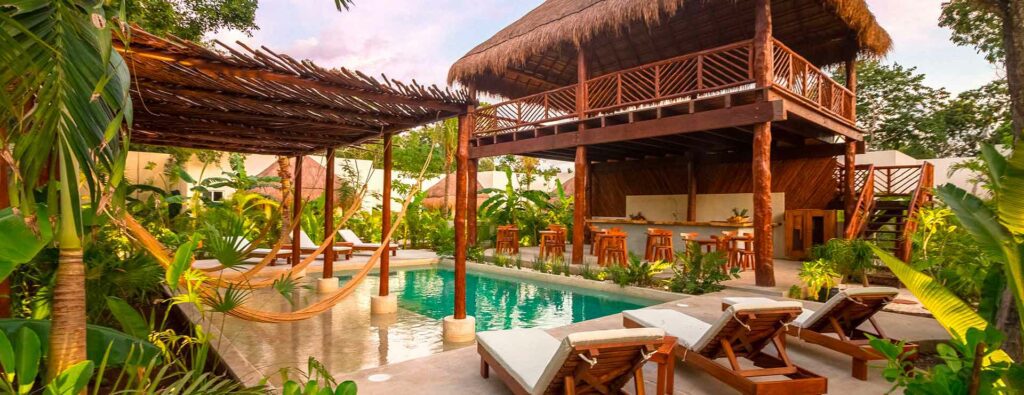
6.2. Quantifying Wellness Benefits
While the advantages of wellness tourism are apparent, quantifying these benefits presents challenges. Wellness benefits can be subjective, varying from person to person. Measuring health improvements accurately is a complex task due to several factors:
- Subjectivity: Wellness experiences are deeply personal, making it challenging to develop standardized metrics for improvement.
- Long-Term Effects: Some wellness benefits, such as stress reduction and mental clarity, may manifest in the long term, making immediate measurement difficult.
- Diverse Offerings: The wellness tourism industry offers a wide range of services, from spa treatments to outdoor adventures, each with its unique benefits and metrics.
Addressing these challenges requires collaboration between wellness practitioners, researchers, and policymakers to develop comprehensive evaluation criteria that consider both subjective and objective measures of wellness.
6.3. Regulatory Issues in Wellness Tourism
As wellness tourism continues to grow, the lack of industry regulations has become a point of concern. The absence of clear standards and oversight can lead to several issues:
6.3.1. Lack of Industry Regulations
Many wellness practitioners and facilities operate without standardized regulations, leading to disparities in service quality and safety. Inconsistent practices can result in tourists receiving subpar or potentially harmful treatments.
6.3.2. Safety Concerns
Safety is paramount in wellness tourism. Without stringent regulations, there is a risk of accidents or adverse reactions to treatments. Ensuring the well-being of wellness tourists necessitates the establishment of industry-specific safety protocols and regulations.
6.4. Environmental Impact
Wellness tourism’s rapid growth has raised concerns about its environmental footprint. The industry’s impact on the environment encompasses two critical aspects:
6.4.1. Infrastructure Challenges
The development of wellness resorts and facilities can strain local infrastructure, including water and energy resources. Balancing the construction and operation of wellness establishments with sustainable practices is essential to minimize this impact.
6.4.2. Natural Resource Depletion
Wellness tourism often involves the use of natural resources such as mineral-rich waters, forests, and pristine landscapes. Unsustainable resource extraction or overuse can lead to ecological imbalances and the degradation of natural sites, compromising their appeal to future wellness tourists.
Addressing these environmental concerns requires a commitment to sustainable practices, responsible development, and the conservation of natural resources. Collaboration between wellness tourism stakeholders and environmental experts is vital to strike this balance.
In conclusion, while wellness tourism offers numerous advantages, it also faces critical challenges related to quantifying wellness benefits, establishing industry regulations, and minimizing its environmental impact. Addressing these issues is crucial to ensuring the industry’s continued growth and sustainability. The next chapter will provide a comprehensive conclusion, summarizing key takeaways and outlining the future of wellness tourism.
Chapter 7: Conclusion
In this comprehensive exploration of the thriving wellness tourism industry, we’ve journeyed through various facets of this dynamic sector. From defining wellness tourism to uncovering its impact on health and well-being, from examining regional insights to understanding the diverse services and industry players, and from discovering key destinations to addressing criticisms and challenges, we’ve gained valuable insights into this evolving field.
7.1. Key Takeaways
As we conclude this article, let’s recap the key takeaways from our journey through the world of wellness tourism:
- Wellness Tourism Defined: Wellness tourism is a multifaceted industry that focuses on enhancing individuals’ physical and mental well-being through travel experiences.
- Global Growth: The wellness tourism market is expanding rapidly, with diverse services and destinations catering to the diverse needs of travelers.
- Regional Insights: Different regions around the world offer unique wellness experiences, each influenced by their cultural traditions and natural resources.
- Industry Players: The wellness tourism sector comprises a wide range of players, including wellness practitioners, resorts, and product providers.
- Destination Diversity: From mineral baths in Europe to traditional Asian wellness practices, there are numerous wellness offerings for travelers to explore.
- Advantages and Challenges: While wellness tourism offers physical and mental well-being benefits, it also faces challenges related to quantifying wellness benefits, establishing regulations, and addressing environmental impacts.

7.2. The Future of Wellness Tourism
The future of wellness tourism looks promising, but it will require strategic planning and adaptability to continue thriving. Some key trends and developments to watch for include:
- Personalization: Travelers increasingly seek personalized wellness experiences tailored to their unique preferences and health goals.
- Technology Integration: The integration of technology, such as wearables and wellness apps, will enhance the overall wellness travel experience.
- Sustainability: The industry will place a stronger emphasis on sustainable practices, including eco-friendly resorts and responsible tourism.
- Wellness in Non-Traditional Settings: Wellness concepts will extend beyond traditional spa resorts to encompass urban wellness, nature retreats, and more.
- Holistic Wellness: There will be a greater focus on holistic wellness, encompassing mental, emotional, and spiritual well-being in addition to physical health.
7.3. Encouraging Responsible Wellness Tourism
As wellness tourism continues to evolve, it’s crucial to encourage responsible practices. This involves:
- Regulations: Developing industry-specific regulations to ensure the safety and quality of wellness services.
- Education: Promoting education and awareness about wellness practices and their potential benefits.
- Sustainability: Emphasizing sustainable tourism practices to minimize environmental impact.
- Collaboration: Encouraging collaboration between wellness practitioners, destinations, and policymakers to shape the industry’s future positively.
In conclusion, wellness tourism has emerged as a transformative force, offering travelers a path to better health and well-being while contributing to the global travel economy. By addressing challenges, fostering innovation, and embracing responsible practices, the future of wellness tourism holds exciting possibilities for both travelers and the industry as a whole.
Chapter 7: Conclusion
As we conclude our journey through the realm of wellness tourism, it’s essential to reflect on the myriad insights we’ve uncovered. Wellness tourism, a rapidly growing and transformative industry, offers a diverse array of experiences designed to promote health and well-being. Throughout this article, we’ve explored its facets, challenges, and promises, leaving us with a deeper understanding of its significance in the global travel landscape.
7.1. Key Takeaways
Let’s revisit some of the key takeaways from our exploration:
- Holistic Well-being: Wellness tourism embraces holistic well-being, addressing not only physical health but also mental, emotional, and spiritual aspects.
- Market Growth: The wellness tourism market is experiencing significant growth, with travelers seeking experiences that nourish both body and soul.
- Regional Diversity: Different regions offer unique wellness experiences influenced by their culture, traditions, and natural surroundings.
- Diverse Players: The industry comprises a wide range of players, including wellness practitioners, resorts, and product providers.
- Sustainable Practices: Sustainability and responsible tourism practices are becoming increasingly important for wellness destinations.
7.2. The Future of Wellness Tourism
Looking ahead, the future of wellness tourism holds exciting possibilities. Some notable trends and developments to anticipate include:
- Personalized Experiences: Travelers are seeking more personalized wellness experiences tailored to their unique preferences and health goals.
- Technology Integration: The integration of technology, such as wearable devices and wellness apps, will enhance the wellness travel experience.
- Sustainability Focus: There will be a stronger emphasis on sustainable and eco-friendly practices in the industry.
- Expanded Wellness Offerings: Wellness concepts will extend beyond traditional spa resorts to encompass urban wellness, nature retreats, and more.
- Global Reach: Wellness tourism will continue to expand to new and emerging markets worldwide.
7.3. Encouraging Responsible Wellness Tourism
In the pursuit of growth and innovation, it’s crucial to prioritize responsible practices in wellness tourism. Here are some key areas of focus:
- Regulations: Developing and implementing industry-specific regulations to ensure the safety and quality of wellness services.
- Education: Promoting education and awareness about wellness practices and their potential benefits among both travelers and providers.
- Sustainability: Emphasizing sustainable tourism practices, such as reducing environmental impact and supporting local communities.
- Collaboration: Encouraging collaboration among wellness practitioners, destinations, and policymakers to shape the industry’s future positively.
In conclusion, wellness tourism offers a transformative and enriching experience for travelers while contributing to the global travel economy. By embracing sustainability, innovation, and responsible practices, the future of wellness tourism is poised to be bright and fulfilling for both travelers and the industry as a whole.
Tourism Wellness FAQs
In the ever-evolving landscape of wellness tourism, it’s essential to address the questions and concerns that potential travelers and industry enthusiasts may have. Below, we delve into some frequently asked questions (FAQs) that shed light on key aspects of this thriving industry.
What is the market size of wellness tourism?
Answer: The wellness tourism market has witnessed substantial growth in recent years. According to industry reports, the market was valued at [insert market valuation] in [insert year]. This figure demonstrates the increasing demand for wellness-oriented travel experiences globally.
How do wellness tourists differ from regular tourists?
Answer: Wellness tourists distinguish themselves from traditional travelers by their primary focus on enhancing their well-being. While regular tourists may seek leisure and entertainment, wellness tourists prioritize activities and experiences that promote physical, mental, and emotional health. This distinction guides the types of destinations and services they choose.
Are there any safety concerns in wellness tourism?
Answer: Safety is a paramount concern in wellness tourism. Travelers engaging in wellness activities, such as extreme sports or alternative therapies, should ensure that the providers are reputable and adhere to safety standards. Additionally, travelers with specific health conditions should consult with healthcare professionals before embarking on wellness trips.
Which regions are popular for wellness tourism?
Answer: Wellness tourism is a global phenomenon, with various regions gaining popularity. North America, Europe, Asia-Pacific, and Latin America are prominent hubs for wellness travel. Each region offers unique experiences and draws travelers for different reasons, from spa retreats in Europe to traditional wellness practices in Asia.
What are the benefits of wellness tourism on mental health?
Answer: Wellness tourism can have a profound impact on mental health. Travelers often report reduced stress levels, improved mental clarity, and enhanced emotional well-being after wellness trips. Engaging in activities like mindfulness meditation, yoga, or spending time in nature can contribute to these positive mental health outcomes.
How do wellness practitioners promote well-being?
Answer: Wellness practitioners play a pivotal role in enhancing travelers’ well-being. They offer a wide range of services, including spa treatments, fitness classes, nutritional guidance, and stress management techniques. These professionals are trained to tailor experiences to meet individual health and wellness goals.
What are some unique wellness practices in Asia?
Answer: Asia boasts a rich tapestry of traditional wellness practices. These include yoga and meditation in India, hot spring bathing in Japan, Ayurvedic treatments in Sri Lanka, and traditional Chinese medicine in China. Travelers seeking authentic and time-tested wellness experiences often flock to Asia for these unique practices.
Can wellness tourism positively impact local economies?
Answer: Yes, wellness tourism can have a significant positive impact on local economies. Wellness travelers typically spend more on accommodations, dining, and local experiences compared to regular tourists. This increased spending can create jobs, support local businesses, and contribute to the economic growth of wellness destinations.
Are there any regulations for wellness tourism?
Answer: While wellness tourism is a growing industry, it lacks standardized global regulations. However, many countries and regions have established guidelines and quality standards for wellness service providers to ensure the safety and satisfaction of travelers. Travelers should look for certifications and reviews when selecting wellness destinations and services.
How does wellness tourism affect the environment?
Answer: The environmental impact of wellness tourism varies depending on the practices of the destinations and businesses involved. While some wellness resorts prioritize sustainability, others may have a larger environmental footprint. Travelers interested in eco-friendly wellness experiences should research and choose destinations and providers with strong environmental policies.
These frequently asked questions provide valuable insights into the world of wellness tourism, catering to the curiosity and interests of travelers and industry stakeholders alike. By addressing these queries, we aim to foster a deeper understanding of this thriving and transformative sector.


